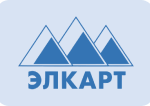Description
A localization-enabled (or multilingual) application allows users to choose the language of the interface and content according to their preferences or location. This is an important functionality to ensure the usability of the application by a global audience. Let’s look at the main aspects of localization for your application:
- Multilingual interface:
Language selection: Implement the interface language selection functionality. This can be in the user settings or in the main menu of the application.
Storing translations: Create translation files for each supported language. These can be resource files or specialized libraries for working with localization. - Dynamic localization of content:
String resources: Instead of storing texts directly in the code, use resource strings. Each line of resources can have its own variants for different languages.
Date and Number format: Please note that date and number formats may vary from culture to culture. Use the formatting functions to display them correctly. - Content generation depending on the language:
Media Resources: If your application includes media content (images, videos), make sure that appropriate content is provided for each language, where necessary.
Content adaptation: Some content may require adaptation during translation. For example, consider the length of words and phrases in different languages. - Testing:
Translation testing: Periodically test the application in different languages to make sure that the texts are translated correctly and do not lose their meaning. - Localization Management:
Translation Management System: Consider using a translation management system for a more convenient and efficient localization process. - Documentation for developers:
Localization Instructions: If your application will be used by other developers, provide detailed instructions for adding new languages and updating translations.
The implementation of these steps will ensure the successful implementation of localization in your application, make it accessible to a wider audience and increase user satisfaction.











Reviews
There are no reviews yet.